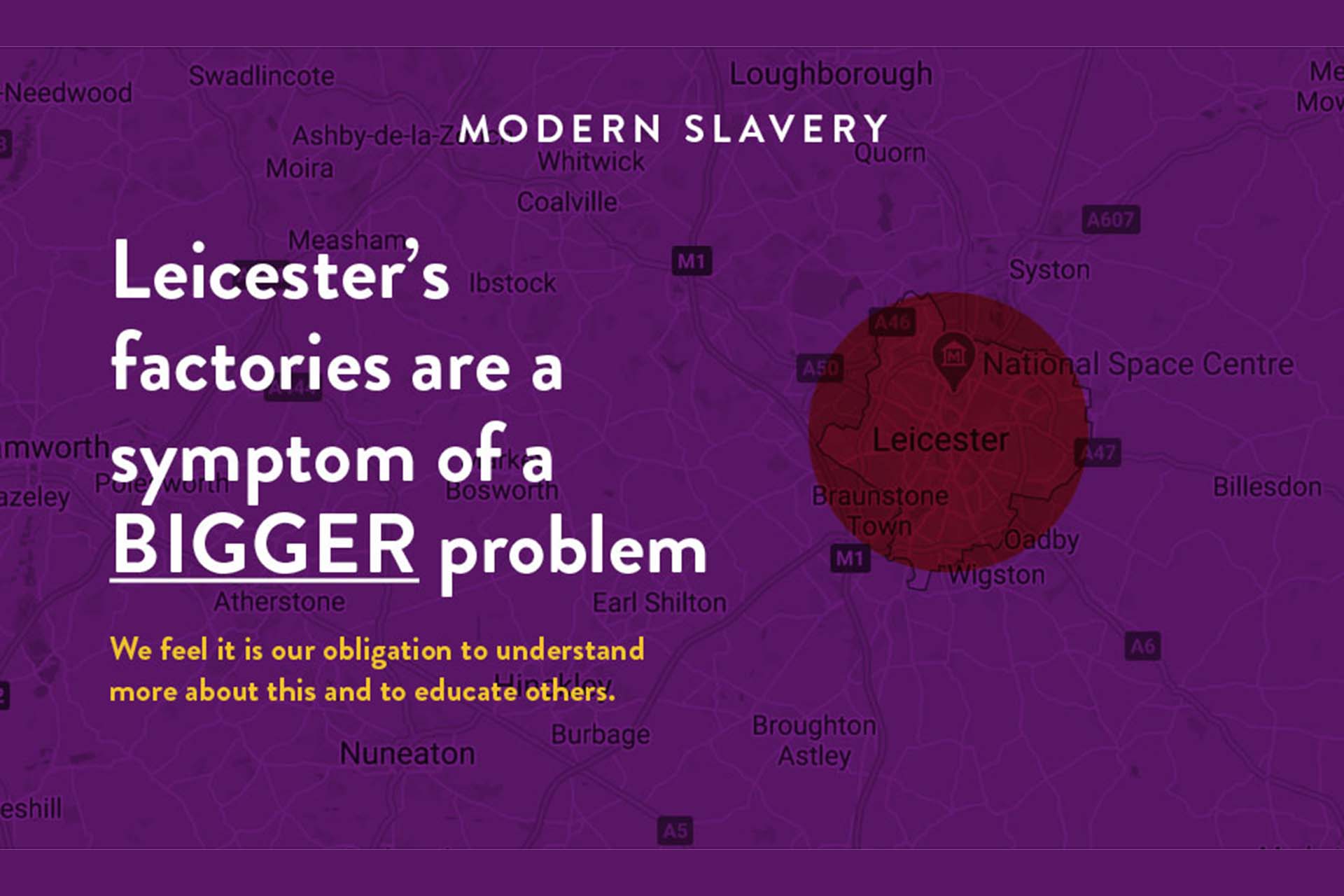
Over this past month Leicester’s textile factories have featured heavily in the news. This is with good cause, as the reports detail serious exploitation, with workers being paid as little as £3 per hour, working in dilapidated buildings and dealing with bullying and abuse. Despite multiple claims of exploitation and unsafe working environments made to central and local government, these factories are rarely inspected.
We feel it is our obligation to understand more about this and to educate others. With that in mind we’re sharing some reflections and resources to get you started. We will be sharing information about Leicester’s factories, about exploitation, about how to end it.
This is a quick summary of our thoughts on the situation.
1. This should not be surprising
We know modern slavery exists in the UK
A recent report estimated that there are at least 100,000 victims of modern slavery in the UK. It is hard to make an estimate, as the crime is known to be hidden in plain sight, but we know that 10,627 potential victims have actually been reported to the National Crime Agency in 2019. Some of the sectors that are deemed at risk of exploitation include construction, manufacturing, agriculture, fishing, food processing, hospitality, and care.
It is happening. It is happening here. And it is linked with every one of our lives.
This is not the first exposé about Leicester’s textile workers
Dispatches uncovered factory workers getting paid as little as £2 in Leicester in 2010. The Ethical Trading Initiative and University of Leicester published a report on exploitative practices in the same factories in 2015. The Financial Times published an article exposing exploitative practices in Leicester garment factories in 2018 and the Environmental Audit Committee published its own research on the issue with recommendations directed to government early last year. The CEOs of previously implicated retailers spoke with various government agencies in 2017 about having to raise standards in Leicester textile factories.
Central government knew. Local government knew. Businesses knew.
How can clothing be that cheap?
A 2018 article on the exploitative practices taking place in Leicester’s textile factories detailed buying a £6 and £7 dress from an online retailer whose clothing was made at the investigated factories. The minimum wage at the time is £7.82. We’ve done the math and it doesn’t add up to good working conditions. While the odd item on sale could be excused by the brand absorbing margin loss to give a good deal to the customer, consistently low prices leads one to wonder.
2. Why does it happen?
To effectively address exploitation, we have to consider the root causes. Until now there have been some great campaigns by leading anti-slavery NGOs educating people on how to spot the signs of modern slavery (Shiva Foundation has done this as well). But if the signs have been spotted, as is the case with Leicester, how can we go further?
We must delve into the drivers and root causes of exploitation. One element of “prevention” work is to decrease the vulnerability of potential victims, for example, running education programmes on the rights a worker has in the UK if they’re coming from abroad, or information on negative practices (i.e. being charged recruitment fees, having identification documents withheld). But this might not be enough. In the case of Leicester, the article written in 2018 exposing the poor working conditions in textile factories, told the story of a worker, Hassan Doshi. Doshi had previously been working in the Leicester garment industry before factories were moved offshore – he had experienced better working conditions and knew that what he was experiencing in 2018 was exploitative. Thinking education would have prevented his exploitation ignores all of the other factors that meant he had no other choice.
So in addition to teaching people to spot exploitation once it’s happened and equipping potential victims with the knowledge to spot misleading work opportunities, we must look at business structures and how they can be shifted to drive out exploitation.
The power to push back on contract provisions decreases down the supply chain. Unless this power is rebalanced, those at the bottom of the chain (like Leicester’s factory workers) will suffer the consequences.
One example is outsourcing to cut costs. We know that in the hotel sector a majority of workers are outsourced. But because this is an unregulated area, some agencies providing workers for housekeeping for example, are charging such a low rate to hotels, they cannot be paying workers properly. The lead businesses must be accountable for all parts of their value chain. Saying one did not know will not suffice.
3. This is just the tip of the iceberg
There are an estimated 10,000 workers in Leicester’s factories. We know there are at least another 90,000 survivors across the country, according to estimates. Textile factories are high risk, but they are not alone. And the practices we’ve seen are not unique to this industry. There are a wide number of sectors that have been highlighted as high risk for exploitation in the UK.
We will circulate information on some of these industries. Learn more and be active in your circle of influence.
We know exploitation exists. Let’s work together to end it.
*This is part of a blog series examining exploitation in the UK. To read our blog on what actually happened in Leicester go here. To read our blog detailing the history of exploitation in the region go here.


